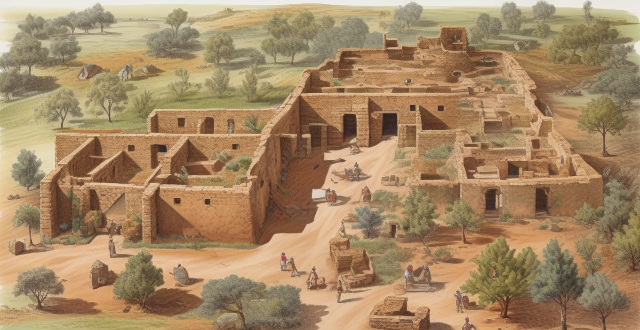Cultural site restoration projects play a crucial role in preserving the historical and cultural heritage of a region. These projects involve the restoration, conservation, and maintenance of buildings, monuments, and other structures that have cultural significance. Some examples of successful cultural site restoration projects include the Colosseum in Rome, Italy; Angkor Wat Temple in Cambodia; Machu Picchu in Peru; and the Great Wall of China. These projects demonstrate the importance of preserving our cultural heritage for future generations by restoring these sites and promoting sustainable tourism practices that benefit local communities and economies.

Successful Cultural Site Restoration Projects
Cultural site restoration projects play a crucial role in preserving the historical and cultural heritage of a region. These projects involve the restoration, conservation, and maintenance of buildings, monuments, and other structures that have cultural significance. Here are some examples of successful cultural site restoration projects:
1. Colosseum, Rome, Italy
The Colosseum is an iconic symbol of ancient Roman civilization and one of the most recognizable landmarks in the world. The restoration project began in the early 2000s and aimed to stabilize the structure, repair damage caused by natural disasters and human activity, and improve accessibility for visitors. The project was completed in 2016, and the Colosseum now serves as a testament to the power of restoration in preserving cultural heritage.
2. Angkor Wat Temple, Cambodia
Angkor Wat is a massive temple complex located in Cambodia and is considered one of the most significant archaeological sites in Southeast Asia. The restoration project began in the late 1990s and involved extensive work on the temple's foundations, walls, and roofs. The project also included efforts to conserve the surrounding environment and promote sustainable tourism. Today, Angkor Wat is a popular tourist destination and a symbol of Cambodia's rich cultural heritage.
3. Machu Picchu, Peru
Machu Picchu is an ancient Incan city located high in the Andes Mountains of Peru. The restoration project began in the late 1980s and involved extensive work on the city's infrastructure, including roads, bridges, and buildings. The project also focused on preserving the natural environment surrounding the city and promoting sustainable tourism practices. Today, Machu Picchu is one of the most popular tourist destinations in South America and a testament to the power of restoration in preserving cultural heritage.
4. Great Wall of China, China
The Great Wall of China is a series of fortifications built along the northern borders of China between the 5th century BCE and the 16th century CE. The restoration project began in the late 1970s and involved extensive work on various sections of the wall, including repairs to damaged sections and improvements to visitor facilities. The project also focused on preserving the natural environment surrounding the wall and promoting sustainable tourism practices. Today, the Great Wall of China is one of China's most iconic landmarks and a testament to the power of restoration in preserving cultural heritage.
In conclusion, these successful cultural site restoration projects demonstrate the importance of preserving our cultural heritage for future generations. By restoring these sites, we not only preserve their historical significance but also promote sustainable tourism practices that benefit local communities and economies.